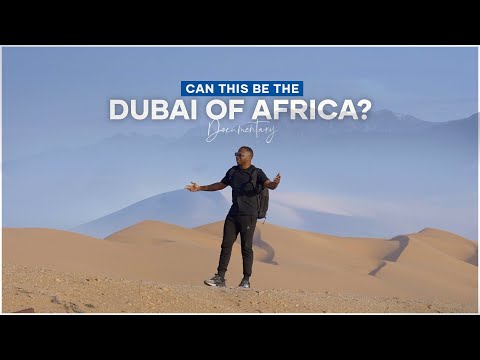
When one thinks of iconic tourist destinations, Dubai often comes to mind with its towering skyscrapers, luxurious resorts, and technologically driven attractions. However, nestled along the southwestern coast of Africa lies a gem that offers a different kind of allure—Namibia. Known for its vast wilderness, stunning landscapes, and rich cultural heritage, Namibia is emerging as a significant tourist destination that capitalizes on its unique natural beauty and adventurous experiences.
#### Unveiling the Charm of Namibia
Unlike the urban opulence of Dubai, Namibia presents a breathtaking canvas of diverse terrains and wildlife. From the sprawling dunes of the Namib Desert, reputed to be the oldest desert in the world, to the lushness and abundant wildlife of Etosha National Park, Namibia serves up scenes that seem plucked from nature documentaries.
The contrast is stark and intentional. Where Dubai has cultivated itself into a hub of modernism and luxury tourism, Namibia draws travelers seeking connection with nature and ancient cultures. The country offers an array of experiences that cater to ecological tourism and adventure enthusiasts—quad biking over sand dunes, hot air ballooning across arid landscapes, tracking rare black rhinos on foot in Damaraland or exploring the haunting beauty of shipwrecks at Skeleton Coast.
#### Cultural Riches Beyond Wildlife
Namibia’s tourism isn’t only about its natural resources; it’s deeply intertwined with cultural experiences. The country is home to various indigenous tribes such as the Himba, San (Bushmen), and Herero, each offering tourists insights into their unique traditions and ways of life preserved over centuries. Visiting a Himba village or witnessing the ancient rock art at Twyfelfontein allows tourists to step back in time and enrich their understanding of human history.
#### Sustainable Tourism: Namibia’s Pathway to Growth
Recognizing the potential impacts of tourism on its pristine environments and cultures, Namibia has been a pioneer in integrating conservation efforts with community benefits. The conservancy model here enables local communities to manage natural resources sustainably while benefiting economically through jobs created by lodges operating within these conservancies.
Sustainable practices are not just limited to wildlife conservation but are also seen in eco-friendly accommodations scattered throughout the country. Properties like Wolwedans Dunes Lodge and Hoanib Skeleton Coast Camp not only offer luxury amidst wilderness but do so while maintaining an eco-conscious footprint.
#### Challenges on the Horizon
As with any burgeoning tourist destination, there are challenges. Infrastructure such as roads can be improved to make remote attractions more accessible. Additionally, global issues like climate change threaten delicate ecosystems such as deserts and coastal areas which form part of what makes Namibia unique.
Moreover, balancing increased tourist footfall with conservation needs will be crucial for maintaining both biodiversity and visitor experience quality. Implementing strategies that regulate numbers during peak seasons especially in sensitive zones can aid in this balance.
#### Conclusion: The Road Ahead for Namibian Tourism
The journey towards becoming a top-tier tourist destination akin to Dubai involves harnessing what makes it unique rather than emulating others’ models—a celebration of unspoiled landscapes combined with community-driven sustainable tourism practices. With continued efforts toward enhancing infrastructure responsibly alongside international marketing campaigns highlighting its unique offerings (such as recently hosting parts of popular TV shows like Netflix’s “Love is Blind”), Namibia can carve out a distinct place for itself on the global tourism map.
Tourists seeking something different from typical cityscapes will find solace and adventure in this extraordinary African nation—this might not be Dubai but it’s definitely worth your visit!
